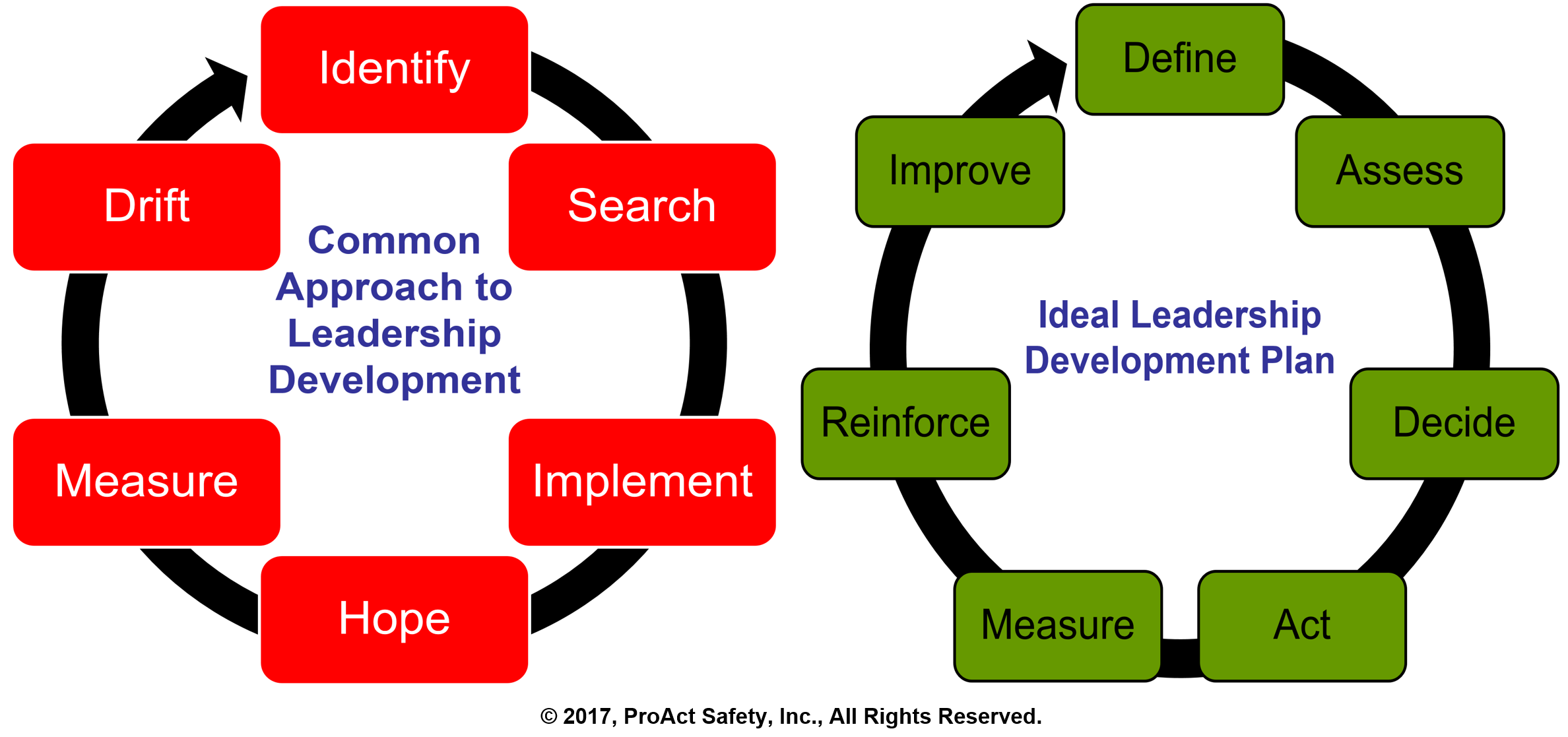Occupational Health & Safety - June 2017
By: Shawn M. Galloway
Printable Version
Leadership development and aligning leaders towards safety performance and cultural improvement is a key strategic priority for many organizations. Unfortunately, most go about it the wrong way. See if this sounds familiar: training is chosen or created, or a workshop facilitated for supervisors, managers or executives who are told to show up at a date and time, with little understanding of why they are there, how it will benefit them personally, how it is connected with an overarching strategy, why the material to be covered or taught was selected over thousands of other development opportunities, and how it will be reinforced after the event.
Leadership development is best executed when customized to the needs of not just the organization, but the individual leaders within as well. Moreover, it is best when efforts are connected to other strategic priorities of the company and point to specific data-driven decisions that outline, enable and reinforce the critical leadership roles, responsibilities and results. Problems begin when these concepts or elements have yet to be decided.
-
A common approach to leadership development efforts in many corporations follows this cycle:
- Identify: It is decided the behaviors of the leaders are not congruent with what is desired. Or results are not being recognized and, realizing leaders own the performance, culture and results, it is determined that helping them grow in their roles should be a priority. However, what is most common is someone finally realizing the average supervisor was once the super employee, promoted without being provided the skills to be a great leader.
- Search: Someone is tasked with the objective of finding the best program available. Little thought is given to defining what success will look like following the effort and how it will be reinforced when completed.
- Implement: The development effort occurs and attention is placed more on attendance than value created.
- Hope: Because measurement of success weren't created, nor plans to reinforce the efforts and increase accountability for the new expectations, fingers are crossed, prayers sent and leaders hope the efforts lead to an improvement in results.
- Measure: Lagging indicators are assessed. Like in many situations, doing something, anything, can often yield results. This is referred to as the Hawthorn effect, where improvement occurs regardless of the intervention largely due to the attention being placed on the area needing improvement.
- Drift: Problem solved, right? If there is a short-term improvement in results, attention to the problem drifts and other priorities are given attention.
- Identify: Because there was no strategy, data-driven focus, reinforcement and change in performance or behavioral accountability, results don't last and the problems become visible again. Wash, rinse, repeat.

-
A more effective approach to leadership development takes the following steps:
- Define: The roles, responsibilities and results of leaders, the skills they need and behaviors they demonstrate should support the improvement strategy. Also first define what a great leaders looks like. Profile your desired leader. What would you see them doing or hear them saying that indicates they are in the right position and a change-agent?
- Assess: Once you know where you are going and what a leader would look like when there, where are you now? Do your leaders have the necessary skills, can they demonstrate the behaviors, do they know how, are they willing to? This is a better gap to identify and focus your improvement efforts on the specifics.
- Decide: Choose strategically and use the outcomes from "define" to act as a qualifier against potential choices in how to help leaders become more effective.
- Act: Leadership development isn't all training. Sometimes a change in accountability and reinforcement is all that is needed with some leaders who just need to be focused and are able to be what you need them to be.
- Measure: Measure not just the results, but also the efficacy of your plans. Did your approach enhance knowledge, create new beliefs and change behaviors? If these aren't a part of your measurements, how will you know whether the results are because of what you did and are sustainable?
- Reinforce: All training is only as effective as the reinforcement that follows. The same holds true for a change in expectations. If it isn't regularly reinforced, priorities will drift.
- Improve: What we know about leadership effectiveness today will be antiquated tomorrow. Leadership development is a career journey with no end. The only constant in all businesses is change. We should anticipate this and always look for a better way, one that continues to add value, while reinforcing the strategy.
How do you develop leaders within your organization? How strategically focused are your efforts, and how well are they measured and reinforced? It is never too late to make improvements on your methods of leadership development. In fact, it is the only way we will continue to improve.

Shawn Galloway, CEO of ProAct Safety, is an expert in safety excellence. With almost thirty years of experience, he is a highly sought-after advisor, keynote speaker, and expert witness. Shawn has become a trusted partner to leading organizations across various industries worldwide. He ranks in the top 1% of the most prolific writers in his field, having authored over 500 articles and several bestselling books. He also launched the world's first safety podcast, Safety Culture Excellence©. As a recognized authority in safety, Shawn has received awards such as being named among the Top 50 People Who Most Influence EHS and a Top 10 Speaker, among others.
He is a regular guest on Bloomberg, Fox News, The Daily Mail, Dubai One, U.S. News & World Report, Sirius Business Radio, Wharton Business Daily, and leading safety magazines and podcasts. Shawn also serves as a member of the Harvard Business Review Advisory Council, Forbes Business Council, and Fast Company Executive Board, enabling his influence to shape safety thinking and strategy at the executive level.
